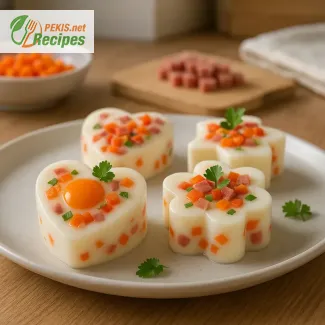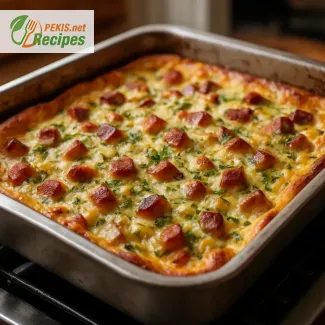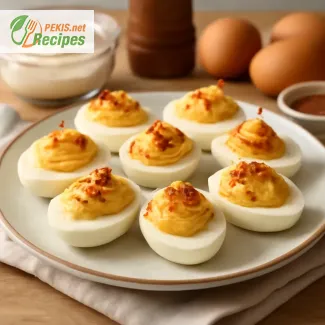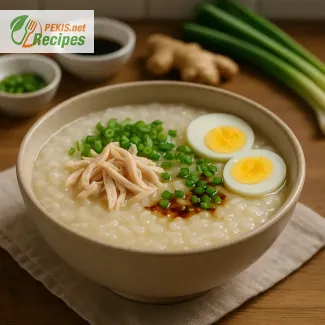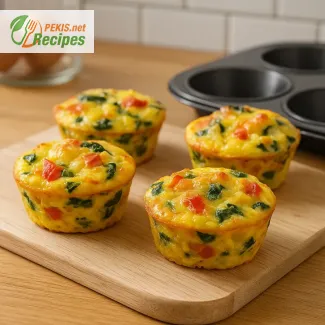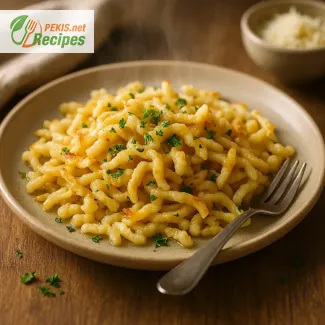
Discover the Authentic Taste of German Spaetzle
A delicious journey into homemade egg noodle perfection
There’s something incredibly comforting about homemade pasta, and when it comes to German cuisine, nothing says tradition quite like a steaming bowl of freshly made Spaetzle. These soft, chewy egg noodles are a beloved staple across Southern Germany, Austria, and parts of Switzerland, often served alongside rich gravies, roasted meats, or buttery sauces. Whether golden and crisped in a pan or served straight from the pot, Spaetzle embodies everything we love about hearty, homecooked food—simple ingredients, satisfying texture, and deep, nostalgic flavor.
Unlike many forms of pasta that require rolling and cutting, Spaetzle dough is unique—more like a thick batter than a traditional dough. Pushed through a special Spaetzle maker or colander into simmering water, these irregular, tender dumplings take just minutes to cook. It’s this rustic preparation and their incredible versatility that have made Spaetzle a comfort food classic not just in Germany, but around the world.
Spaetzle pairs beautifully with a variety of dishes—from slow-braised meats like Sauerbraten and beef goulash to vegetarian staples like creamy mushroom sauce or caramelized onions and cheese (the irresistible Käsespätzle). Its ability to absorb sauces while maintaining a slight bite is what makes it a favorite on so many European tables.
If you’re looking to expand your culinary repertoire or bring a taste of the Alps to your kitchen, this easy homemade Spaetzle recipe is the perfect place to start. It requires no special culinary training, just a few pantry staples and a willingness to get a little hands-on with your cooking. In under an hour, you’ll be serving up a dish that feels gourmet yet rustic, comforting yet refined.
What makes Spaetzle truly shine is its customizability. You can infuse the dough with chopped herbs like parsley or chives for a fresh twist, or experiment with nutmeg and black pepper for added depth. For a heartier meal, pan-fry the noodles in a little butter until crisp and golden, then top with grated Emmental or Gruyère cheese for a melt-in-your-mouth finish. Leftovers? They reheat beautifully and can even be tossed into soups or baked into casseroles for a next-day delight.
What’s especially rewarding about making Spaetzle at home is the sense of culinary heritage it brings. This dish has been passed down through generations, often prepared by hand with family gathered around the kitchen table. There’s something grounding about participating in that tradition, knowing your own hands have shaped something so deeply rooted in European culture.
For those who’ve never tried Spaetzle before, think of it as the German cousin to Italian gnocchi or Hungarian nokedli—but with a fluffier, lighter texture that’s hard to resist. It’s a gateway recipe into the broader world of German comfort food, where richness and simplicity blend in the most delightful ways.
Whether you're planning a traditional Oktoberfest dinner, searching for the perfect side to complement a roast, or just craving something warm and buttery on a cold evening, homemade Spaetzle delivers. It’s unfussy, approachable, and incredibly rewarding—precisely the kind of recipe that becomes a household staple after just one try.
So roll up your sleeves, warm up a pot of salted water, and get ready to bring one of Germany’s most beloved dishes into your own kitchen. This easy, foolproof recipe will guide you through every step of the process, ensuring perfect Spaetzle every time. It's a timeless dish that continues to win hearts across generations—and it might just become your new favorite too.
- In a large mixing bowl, whisk together the wheat flour and salt.
- Crack the eggs into the center and begin mixing, gradually adding the milk until a smooth, thick batter forms. The texture should be sticky and elastic, not runny.
- Allow the dough to rest for 10 minutes at room temperature.
- Bring a large pot of salted water to a gentle boil.
- Using a Spaetzle maker, colander, or slotted spoon, press the dough directly into the simmering water.
- Let the noodles cook until they float to the surface, about 2–3 minutes.
- Scoop them out with a slotted spoon and transfer them to a bowl.
- In a large skillet, melt butter over medium heat. Add the cooked Spaetzle and sauté for 2–3 minutes until slightly golden.
- Optionally sprinkle with chopped parsley before serving.
Creative Twists to Elevate Your Homemade Spaetzle
Transforming tradition with flavorful upgrades and healthy touches
While classic German Spaetzle already boasts a delightful combination of simplicity and satisfaction, there are numerous ways to bring this comforting dish to new culinary heights. With just a few thoughtful ingredient swaps or additions, you can dramatically alter the flavor, texture, and nutritional value of the recipe. This guide explores practical, creative ways to improve your Spaetzle without compromising its traditional charm.
Add herbs and spices for deeper flavor
One of the simplest yet most effective upgrades is incorporating fresh or dried herbs directly into the dough. Herbs like chives, parsley, thyme, or rosemary not only provide aromatic complexity but also bring out savory notes in sauces and side dishes. Adding freshly grated nutmeg or a pinch of white pepper can give the Spaetzle a subtle warmth and depth that complements hearty meats or creamy toppings.
For those who enjoy a spicy kick, a touch of paprika or crushed chili flakes can be folded into the batter to create a more dynamic base, especially when the noodles are later pan-fried in butter.
Enrich the dough with cheese or vegetables
To create a richer, more decadent version of Spaetzle, try adding grated cheese such as Emmental, Gruyère, or aged cheddar directly to the dough before boiling. This method, often used in Käsespätzle, melts the cheese into the noodles for an ultra-comforting dish.
Alternatively, incorporate finely grated or puréed vegetables like spinach, beetroot, or pumpkin. These not only enhance the Spaetzle with color and flavor but also increase its nutritional value. Spinach Spaetzle, for example, turns a beautiful green and pairs beautifully with cream sauces or mushrooms, while pumpkin Spaetzle adds a naturally sweet, earthy element.
Use clarified butter or infused oils for finishing
Instead of regular butter, finish your dish with clarified butter (ghee) or herb-infused oils. These choices provide a more intense, clean flavor and a higher smoke point when sautéing the noodles. Infused oils—such as garlic, basil, or chili oil—can elevate the final dish with a subtle aroma that lingers on the palate.
Why homemade Spaetzle is better than store-bought
While pre-packaged Spaetzle can be convenient, homemade versions are almost always fresher, lighter, and more flavorful. By making the dough yourself, you have complete control over the texture, seasoning, and ingredients, allowing you to create a truly customized version that suits your preferences.
Homemade Spaetzle also avoids preservatives and artificial flavorings, making it a cleaner option. The act of pressing the dough through a Spaetzle maker or colander not only results in a more delicate noodle but also contributes to the authenticity of the experience.
Common mistakes to avoid
Even though the recipe is simple, a few common pitfalls can affect the final result:
- Overmixing the dough: This can make the noodles tough. Mix until just combined and allow the dough to rest.
- Undersalting the boiling water: Like pasta, Spaetzle benefits from well-salted water to develop flavor.
- Improper batter consistency: The dough should be thick but soft enough to press. If it’s too thick, the noodles will be dense; too runny, and they’ll lose shape.
- Skipping the butter sauté: Serving Spaetzle straight from boiling can be bland. Sautéing adds flavor and texture.
Healthier alternatives and gluten-free variations
If you’re looking to reduce calories or increase nutrients, try these healthy alternatives:
- Use whole wheat flour to add fiber and a nutty taste.
- Replace some or all of the flour with spelt or buckwheat flour for a more rustic texture and earthy flavor.
- Substitute low-fat milk or plant-based milks like oat or almond for a lighter version.
- For a gluten-free version, use a quality 1:1 gluten-free flour blend with xanthan gum to maintain the right texture.
These swaps not only make Spaetzle more nutritious but also open the door for people with dietary restrictions to enjoy the dish.
Try pan-frying for a crispy finish
After boiling, Spaetzle is often served soft, but pan-frying the noodles in butter or oil until golden creates a crispy exterior that contrasts beautifully with the tender interior. This method works especially well for leftover Spaetzle, giving it new life and a completely different texture profile.
For an even more indulgent finish, top your pan-fried Spaetzle with caramelized onions, sautéed mushrooms, or toasted breadcrumbs. These additions lend complexity and a touch of elegance to a humble dish.
Create layered casseroles or gratins
Another creative way to serve Spaetzle is to turn it into a baked dish. Layer the noodles with cheese, vegetables, and cream or béchamel sauce, then bake until golden and bubbling. This transforms the dish into a main course worthy of a Sunday family meal or holiday celebration.
With so many options to enhance, adapt, and refine the traditional Spaetzle recipe, it becomes more than just a side dish—it evolves into a versatile culinary canvas. Whether you choose to add herbs, experiment with cheeses, try healthier ingredients, or present it in new formats, these variations offer a way to personalize and perfect one of Germany’s most beloved dishes.
- Gluten (wheat flour)
- Eggs
- Milk (dairy)
Allergen-free substitution tips:
- Replace wheat flour with gluten-free all-purpose flour (ensure it's formulated for elasticity).
- Replace milk with unsweetened almond milk or oat milk.
- Use egg replacer or a mixture of 2 tbsp ground flaxseed + 6 tbsp water as an egg substitute (let sit for 5 minutes before using).
- Vitamin A: 350 µg (important for vision and immune function)
- Vitamin D: 1.1 µg (supports bone health and immune regulation)
- Calcium: 70 mg (maintains healthy bones and teeth)
- Iron: 2.2 mg (essential for red blood cell production)
- Magnesium: 22 mg (supports nerve and muscle function)
- Potassium: 160 mg (helps regulate fluid balance and muscle contractions)
- Zinc: 1.3 mg (supports immune system and wound healing)
- Vitamin B12: 0.6 µg (important for nerve function and blood cell formation)
- Lutein + Zeaxanthin: 290 µg (supports eye health and prevents oxidative stress)
- Beta-carotene: 220 µg (provitamin A, supports immunity and skin health)
- Selenium: 13 µg (protects cells from damage, supports thyroid function)
